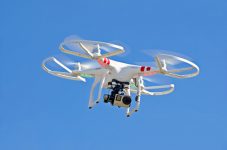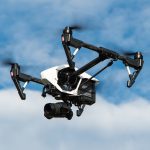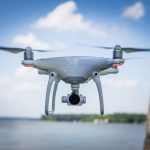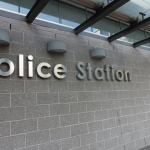New Rules for Flying Drones

Drones are no longer just a toy for the rich and famous, nor are they something out of a futuristic spy film.
These days, drones have become popular amongst a whole range of groups and agencies.
NSW Police have piloted them in search and rescue operations and used them for surveillance, surf lifesaving organisations have used them to spot sharks, film makers, surveyors, real estate agents and farmers have all made good use of the remote devices.
And let’s not forget that they’re really fun to fly, so recreational use is also on the rise.
However, the government is concerned that the proliferation of drone usage exploded before the implementation of appropriate legislation.
Indeed, there have been a string of near-misses, and people doing silly things – like the guy who wanted a sausage from the sizzle at his local Bunnings, and people using the devices for practical jokes, which aren’t always funny to their intended targets.
A senate enquiry which is currently underway will look at all safety aspects of drone use, as well as other matters of concern, including privacy.
Drones are sometimes called UAVs, or Unmanned aerial vehicles (UAVs). Under the law, they are classified as RPAs, or Remotely Piloted Aircraft. As such, they are governed by Civil Aviation Law.
Rules and regulations for their use were recently updated by the Civil Aviation Safety Authority (CASA) to remove some of the ‘red tape’ around commercial drone operations.
Changes to drone rules
As a general rule, drones cannot be flown for money or other economic reward without a specific licence.
However, CASA recently decided that a licence is not required:
- For commercial-like operations over your own land, and
- For commercial flights with very small drones — under 2kgs.
The proviso is that pilots notify CASA at least five business days beforehand, and adhere to all existing rules for recreational drone use.
These flyers do need to apply for an Aviation Reference Number (ARN) which needs to be etched into the drone, or written in a way that makes it permanently and easily identifiable.
Commercial operators also need to obtain CASA’s approval before flight (which can be done online), while recreational users don’t.
Here’s a thumbnail sketch of the basic rules for flying drones:
- Only fly during the day (between sunrise and sunset),
- Keep your drone in your direct line of sight at all times,
- Stay 30 metres away from people, vehicles, and buildings. This means 30m laterally in any direction (not vertically),
- Fly to a height of 120 meters only – from the ground. To give this some clarity, if you have launched your drone over a beach from a headland, you have technically breached the law,
- Stay 5.5 kilometres away from aerodromes and airports,
- Don’t be a nuisance and stay well away from emergency situations such as car accidents, fires, etc,
- Stay away from densely populated areas and places where there are a lot of people, parks, beaches, concerts etc,
- If you see another aircraft, land immediately, and
- If you want to fly a larger drone, you need to be licenced.
More information about the rules can be found on CASA’s website.
While CASA does not provide specific guidelines relating to privacy, drone flyers are urged to check with their state and territory privacy and trespass laws to avoid doing the wrong thing, as in some cases the fines for breaching such rules can be hefty, in some cases up to $9,000.







